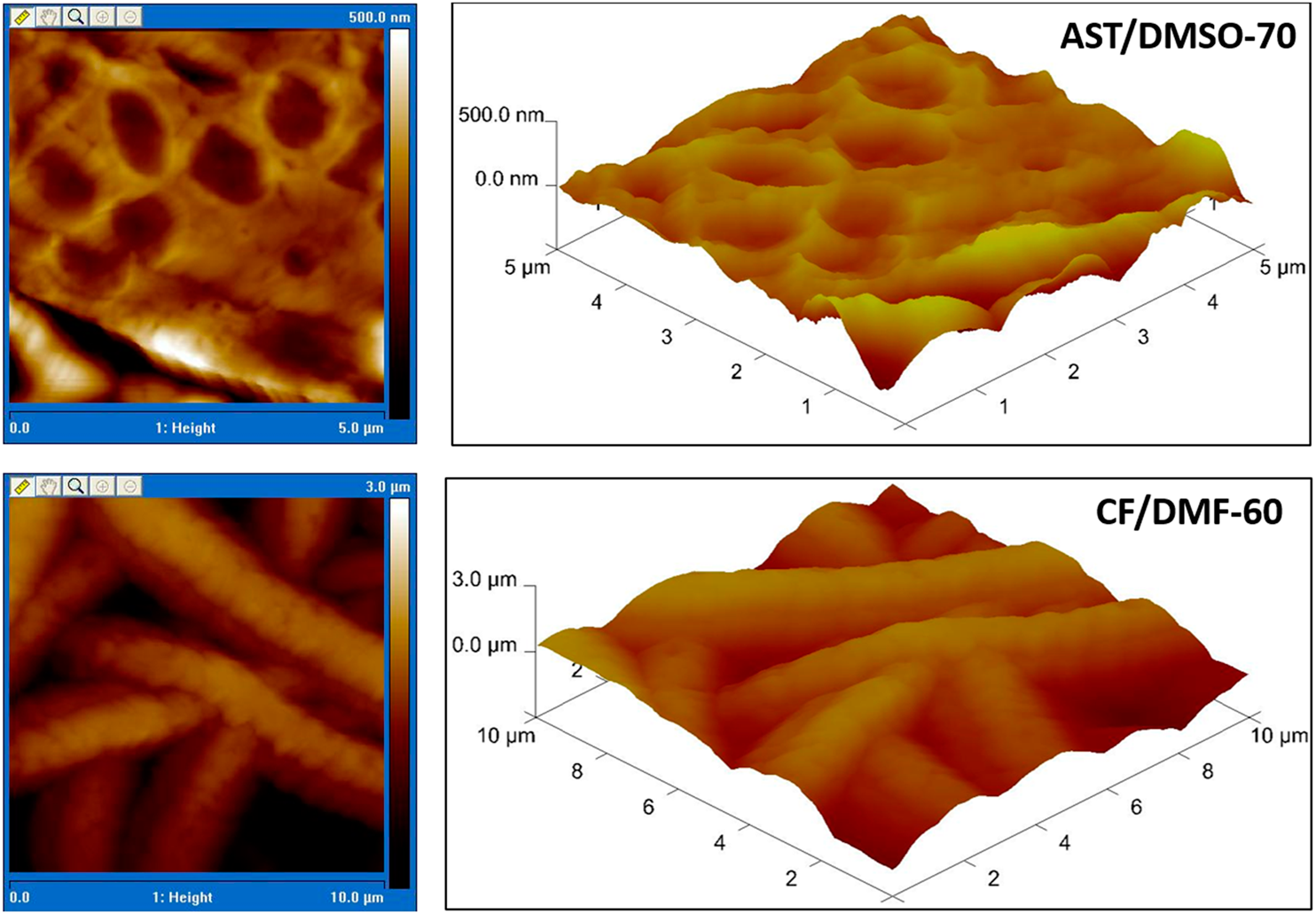Crossref Citations
This article has been cited by the following publications. This list is generated based on data provided by
Crossref.
Sharma, Deepika
Goel, Shubhra
Jacob, Josemon
and
Satapathy, Bhabani K.
2021.
Synthesis, Optimal Fabrication, and Physico‐Mechanical Property Evaluation of PCL‐b‐PLLA Diblock Copolymer‐Based Nanoscale Roughness Textured Electrospun Mats.
Macromolecular Materials and Engineering,
Vol. 306,
Issue. 9,
Eom, Kijoo
Na, Sangyun
Kim, Joong-Kwon
Ko, Hyunhyub
Jin, Jungho
and
Kang, Seok Ju
2021.
Engineering crystal phase of Nylon-11 films for ferroelectric device and piezoelectric sensor.
Nano Energy,
Vol. 88,
Issue. ,
p.
106244.
Rivero, Pedro J.
Fuertes, Juan P.
Vicente, Adrián
Mata, Álvaro
Palacio, José F.
Monteserín, María
and
Rodríguez, Rafael
2021.
Modeling Experimental Parameters for the Fabrication of Multifunctional Surfaces Composed of Electrospun PCL/ZnO-NPs Nanofibers.
Polymers,
Vol. 13,
Issue. 24,
p.
4312.
Chen, Yan-Ru
Chung, Hsiao-Wei
and
Tung, Shih-Huang
2021.
On the Formation Mechanism of Nonsolvent-Induced Porous Polylactide Electrospun Fibers.
ACS Applied Polymer Materials,
Vol. 3,
Issue. 10,
p.
5096.
Mailley, Domitille
Hébraud, Anne
and
Schlatter, Guy
2021.
A Review on the Impact of Humidity during Electrospinning: From the Nanofiber Structure Engineering to the Applications.
Macromolecular Materials and Engineering,
Vol. 306,
Issue. 7,
Salimbeigi, G.
Cahill, P.A.
and
McGuinness, G.B.
2022.
Solvent system effects on the physical and mechanical properties of electrospun Poly(ε-caprolactone) scaffolds for in vitro lung models.
Journal of the Mechanical Behavior of Biomedical Materials,
Vol. 136,
Issue. ,
p.
105493.
Deshmukh, Swapnil
Kathiresan, Murugavel
and
Kulandainathan, Manickam Anbu
2022.
A review on biopolymer-derived electrospun nanofibers for biomedical and antiviral applications.
Biomaterials Science,
Vol. 10,
Issue. 16,
p.
4424.
Poyraz, Şeyma
Altınışık, Zeynep
Çakmak, Anıl Sera
Şimşek, Murat
and
Gümüşderelioğlu, Menemşe
2022.
Random/aligned electrospun PCL fibrous matrices with modified surface textures: Characterization and interactions with dermal fibroblasts and keratinocytes.
Colloids and Surfaces B: Biointerfaces,
Vol. 218,
Issue. ,
p.
112724.
Aoboun, Assareeya
Kang, Gi-Hwan
Pechyen, Chiravoot
and
Shin, Dong-Youn
2022.
Controlling Ag microfibres during the electrospinning process using a manipulated electric field for the maskless patterning of transparent conductive electrodes.
Journal of Materials Research and Technology,
Vol. 20,
Issue. ,
p.
3083.
Hrouda, Ales
Jirkovec, Radek
Safka, Jiri
Vanierschot, Maarten
Denis, Kathleen
and
Capek, Lukas
2022.
Standardized tensile testing of electrospun PA6 membranes via the use of a 3D printed clamping system.
Textile Research Journal,
Vol. 92,
Issue. 13-14,
p.
2298.
Sharma, Deepika
and
Satapathy, Bhabani K.
2022.
Tuning structural-response of PLA/PCL based electrospun nanofibrous mats: Role of dielectric-constant and electrical-conductivity of the solvent system.
Journal of Biomaterials Science, Polymer Edition,
Vol. 33,
Issue. 14,
p.
1759.
Parin, Fatma Nur
and
Terzioğlu, Pınar
2022.
Advanced Functional Porous Materials.
p.
539.
Cao, Xianyang
Chen, Wei
Zhao, Ping
Yang, Yaoyao
and
Yu, Deng-Guang
2022.
Electrospun Porous Nanofibers: Pore−Forming Mechanisms and Applications for Photocatalytic Degradation of Organic Pollutants in Wastewater.
Polymers,
Vol. 14,
Issue. 19,
p.
3990.
Sivan, M.
Madheswaran, D.
Hauzerova, S.
Novotny, V.
Hedvicakova, V.
Jencova, V.
Kostakova, E.K.
Schindler, M.
and
Lukas, D.
2022.
AC electrospinning: impact of high voltage and solvent on the electrospinnability and productivity of polycaprolactone electrospun nanofibrous scaffolds.
Materials Today Chemistry,
Vol. 26,
Issue. ,
p.
101025.
Qavi, Imtiaz
and
Tan, George
2023.
Process control of electrospinning artificial fenestrated capillary vessels.
Materials & Design,
Vol. 227,
Issue. ,
p.
111708.
Karanian, Seied Isa
Naeini, Ali Hosseinian
Amirkhani, Rasool
Gholampour, Mahdi
and
Tavakoli, Hasan
2023.
Enhanced Thermal and Mechanical Properties of Electrospun PA-6 Nanofibers by Embedding Alumina and Tungsten Carbide Particles.
Nano,
Vol. 18,
Issue. 08,
Mandal, Sumit
Song, Guowen
Zeng, Hongbo
Agnew, Robert J.
Chowdhury, Ishmam Zahin
and
Boorady, Lynn M.
2023.
Encyclopedia of Polymer Science and Technology.
p.
1.
Jiang, Changmei
Hua, Ming
Mu, Guixian
Zhao, Shiyou
Chen, Hong
Yao, Lirong
Ge, Jianlong
Zhang, Li
and
Pan, Gangwei
2024.
Superhydrophilic and underwater superoleophobic polylactide/cellulose diacetate composite nanofibrous membranes for effective oil-in-water emulsions separation.
Separation and Purification Technology,
Vol. 348,
Issue. ,
p.
127806.
Juhász, Ákos György
Nanys, Monika
Pinke, Balázs
Fadel, Alexandre
Godzierz, Marcin
Juriga‐Tóth, Krisztina
Molnár, Kolos
Juriga, Dávid
and
Jedlovszky‐Hajdú, Angéla
2024.
Formation of Three‐Dimensional Polysuccinimide Electrospun Fiber Meshes Induced by the Combination of CaCl2 and Humidity.
Macromolecular Rapid Communications,
Vol. 45,
Issue. 7,
Leal, Filipa
Nirwan, Viraj
Gonçalves, Andreia M.
Panitschewski, Nikolai
Filová, Eva
Fahmi, Amir
and
Costa, Pedro F.
2024.
Bio-inspired nanoporous scaffold: electrospun hybrid fibers based on self-assembled block copolymer mineralized with inorganic nanoparticles for bone tissue engineering.
International Journal of Polymeric Materials and Polymeric Biomaterials,
Vol. 73,
Issue. 12,
p.
1054.



